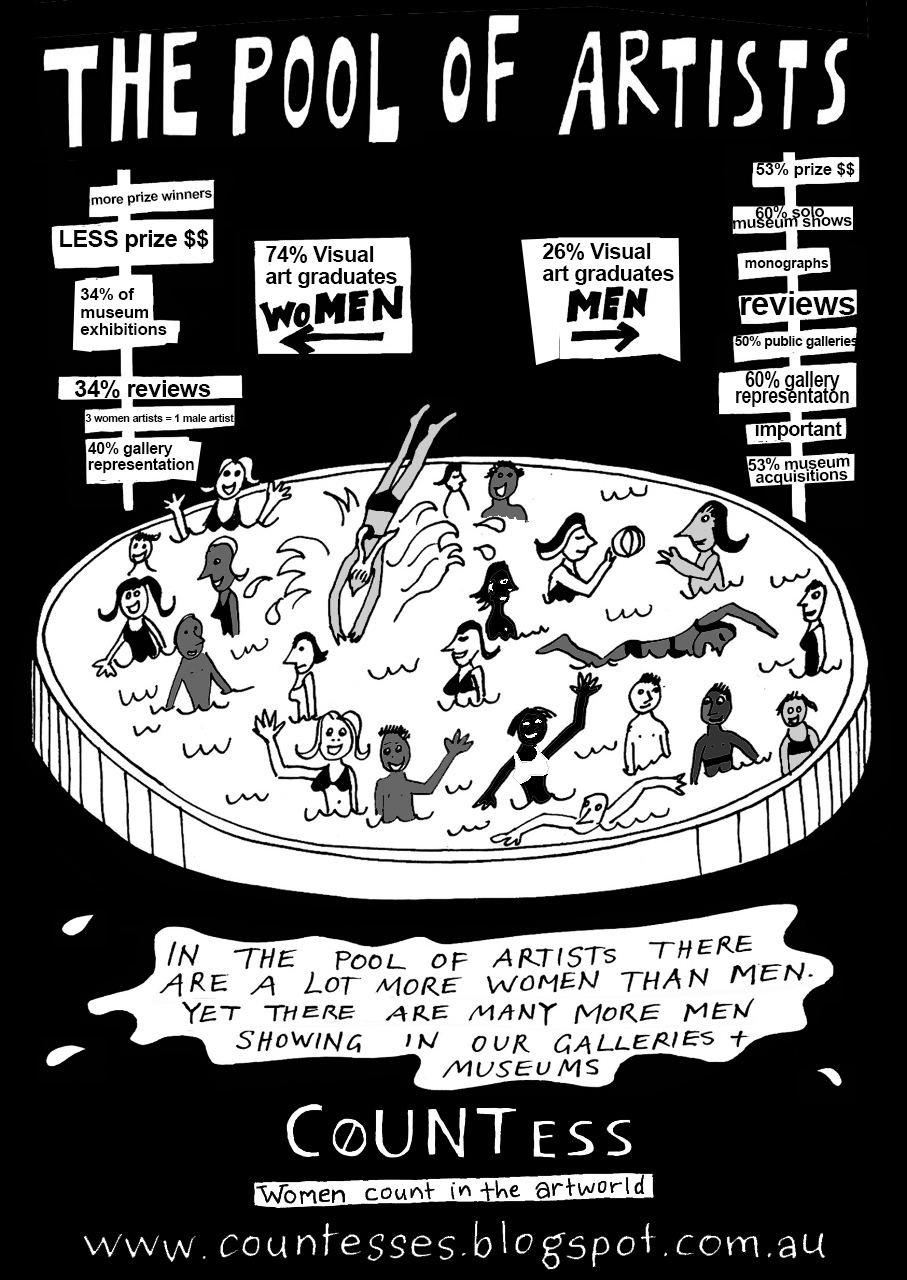
2022 Countess Report
Edited by Miranda Samuels and Shevaun Wright
Join Co-Editors Miranda Samuels and Shevaun Wright who will present the methodologies and findings of the 2022 Countess Report
︎︎︎ ACCA 6pm Thursday 2nd May 2024
︎︎︎ Griffith University Brisbane, 5pm Wednesday 8th May
︎︎︎Artspace Sydney 130pm Saturday 11th May 2024
︎︎︎ ACCA 6pm Thursday 2nd May 2024
︎︎︎ Griffith University Brisbane, 5pm Wednesday 8th May
︎︎︎Artspace Sydney 130pm Saturday 11th May 2024
The 2022 Countess Report is here, our third comprehensive report on gender representation in the Australian art sector. Co-edited by Miranda Samuels and Shevaun Wright, the report continues Countess’s long standing inquiry into the structures and frameworks that govern artistic production and legitimation in the Australian contemporary art world, and has been expanded to include analysis of First Nations representation.
The report analyses gallery and museum exhibition data as well as data on artist education, prizes, funding, organisational governance, collection acquisitions, and commercial gallery representation from across Australia in the calendar year of 2022.
Data on approximately 22,000 artists across more than 450 galleries and arts institutions was manually counted and verified, while data on acquisitions and exhibitions was provided directly by state and territory galleries, allowing for closer scrutiny of asymmetry in acquisition methods, including the Cultural Gift Program. We looked at institutions of all sizes and budgets: artist run initiatives, contemporary art spaces, commercial galleries, public galleries, Aboriginal-owned art centres, university art museums, major museums, and state galleries.
The report aims to not only hold arts institutions accountable to their representational claims and ongoing diversity strategies, but to contribute to and, at times, challenge existing research and reportage around value and artistic success, especially where the impact of gender, race, and class dynamics is obscured or downplayed. Our adoption of the corporate and bureaucratic language of a museum annual report is in service of counteracting and interfering with cultural narratives premised on capitalist and colonial wisdom, and our use of quantitative data is similarly strategic.
Findings from our previous two reports, which analyzed data from 2014 and 2018 respectively, have been widely cited and circulated, and while we welcome the broad use of our research, we also understand that findings in the form of aggregated data run the risk of oversimplifying complex historical, political, and economic dynamics affecting artists today. A focus only on representation can also conceal issues of exploitation, gaps in earnings, and tokenism.
We have designed this report with these contradictions in mind, and have sought to incorporate them into our methodology by: weaving findings from relevant existing research projects into our analysis, and including qualitiative to include interviews with artists.
The 2022 Report has drawn on the expertise of numerous advisors, consultants, and interviewees from across the sector, as well as from the broader Countess.Report team.
We thank and acknowledge the SHEILA
Foundation who have been a longterm
supporter of The Countess Report. Their
financial support, advocacy and
enthusiasm in championing our work has
allowed Countess to continue.
We thank the National Association for the
Visual Arts (NAVA) for their in-kind media
support and ongoing advocacy for The
Countess Report, since 2016.
The 2022 Countess Report project has
been assisted by the Australian Government
through Creative Australia, its principal arts
investment and advisory body.
This project has also been financially assisted
by the Copyright Agency Cultural Fund.
Join our mailing list for announcements ︎︎︎



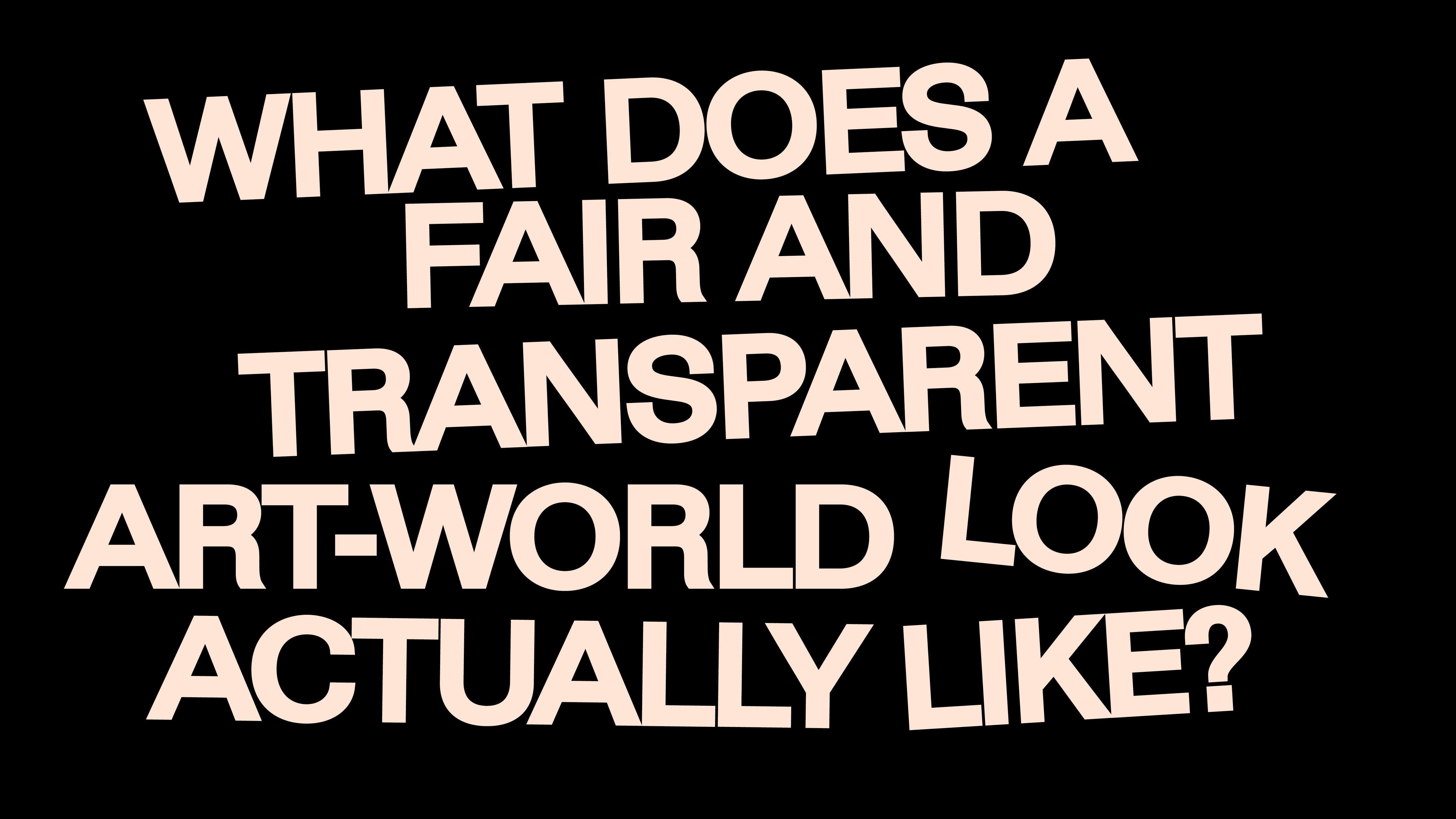

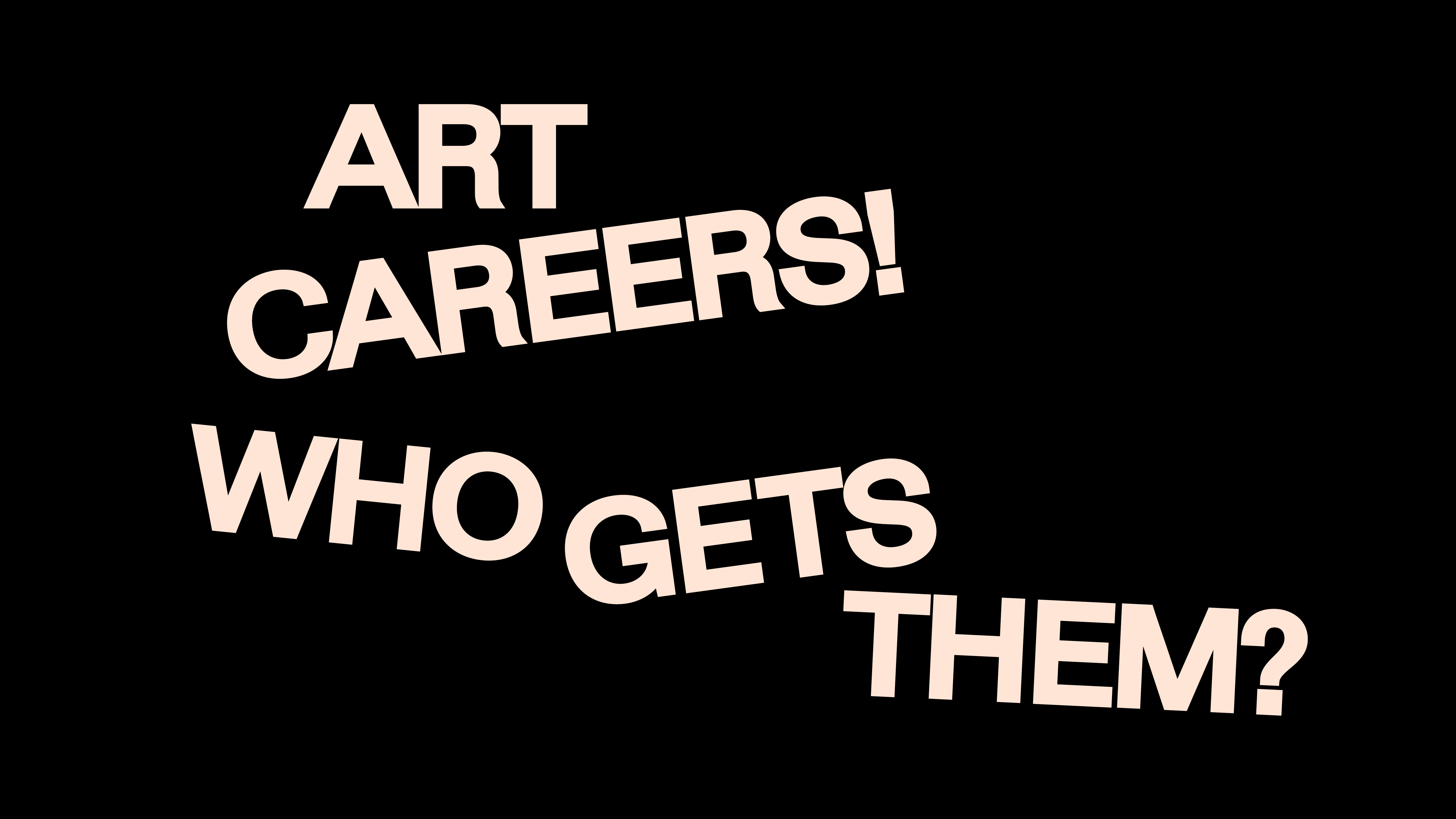
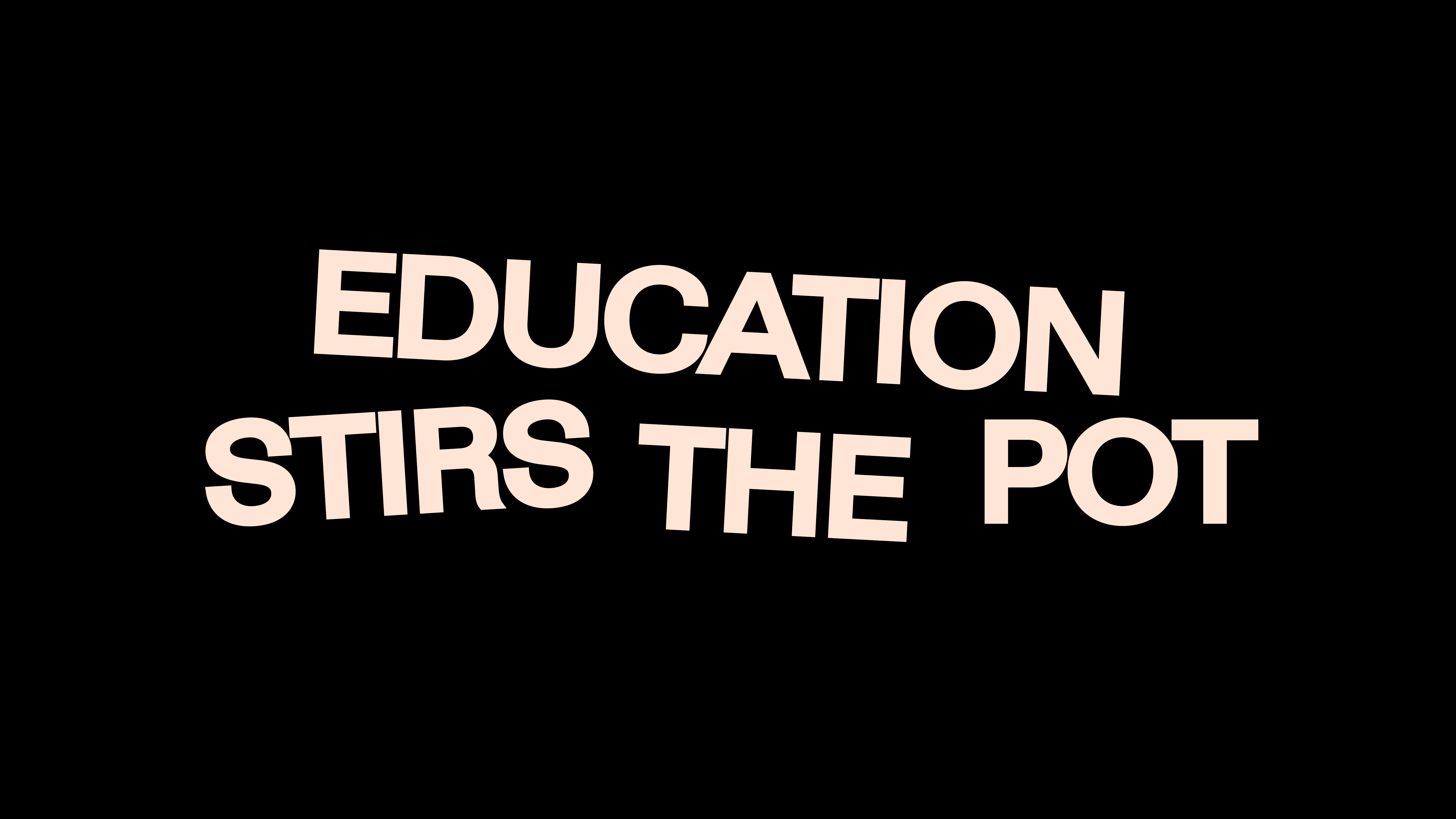
2019 Countess Report
Edited by Amy Prcevich
In 2016, the first Countess Report revealed in detail that an imbalance of power existed in the Australian art world. Men held more positions at senior levels, and despite 75% of art school graduates being female, were significantly better represented across the sector.
Skip forward to 2019, and our updated report chronicles key changes in the sector between 2014 and 2018.
Following wide community uptake of the 2016 report, the Countess spent two years engaging with the arts community through workshops and round-table discussions. During this period, we set out to better understand what and where gender conversations should be focussed, both now and in the future. Key issues and reported points of contention have informed our methodology and the writing of this report, notably in the inclusion of a Non-Binary gender category informed by Clear Expectations ︎︎︎READ HERE. While have attempted to respond to the community’s concerns as best we could with the resources available, we acknowledge there is important work to be done in better understanding the data within the broader context of race and class issues.
It is worth highlighting that since the 2019 report was released, discussions about gender representation in various sectors of the arts have worked their way into the mainstream. We believe this has renewed institutional interest in dealing with issues of gender inequity.
Countess will continue to keep watch in the coming years to ensure this is not a passing trend.
2019 AT A GLANCE
The representation of women has significantly improved.
We counted over 13,000 artists across 184 institutions. This is undeniably a healthy sample size.
The category of non-binary artist was included for the first time. We now have a benchmark for non-binary representation within the sector.
We can report that:
︎︎︎71% of art school graduates are women.
︎︎︎There was an increase in the representation of women artists of between 10-20% across artist run spaces, commercial galleries,
contemporary art organisations, public galleries, major museums and university galleries.
︎︎︎State galleries and museums continue to significantly under-represent women in their collections and exhibitions.
︎︎︎In State galleries and museums the representation of women decreased from 36.9% to 33.9% from 2016 to 2019.
︎︎︎Non-binary artists were represented at 1-2% across the sector, with no non-binary artists recorded in curated state gallery exhibitions in 2018.
︎︎︎52% of art prize winners were women, with the top ten prizes (in dollar value) being a 50/50 split.
Access the full text here︎︎︎PDF
2016 Countess Report
Edited by Elvis Richardson
This study has found that in 2014, female artists may be claiming new ground, and certainly that the number of women showing in Australian galleries is rising, but that the pool of male art graduates still have between three and four times the number of exhibition opportunities as the pool of female graduates.
The study established that women make up 74% of visual art graduates and 48% of exhibiting artists in ARI’s - the most gender equal of the gallery types. Both categories – art schools and ARIs – are open call.
A surprising and pleasing result was that the percentage of female artists showing in CAOs galleries rose from previous levels that were consistently below 40% to 45% in 2014. Art Prizes also took a turn for the better, awarding 56% of the prizes to women, though only 47% of the prize pool by value.
When we looked at prize data historically, the 2014 result indicated a recent and significant improvement, perhaps because women won three of the richest art prizes in 2016.
The analysed biennales and public galleries also achieved percentage representation of women in the mid to high 40s.
Access the full text here︎︎︎PDF
Art
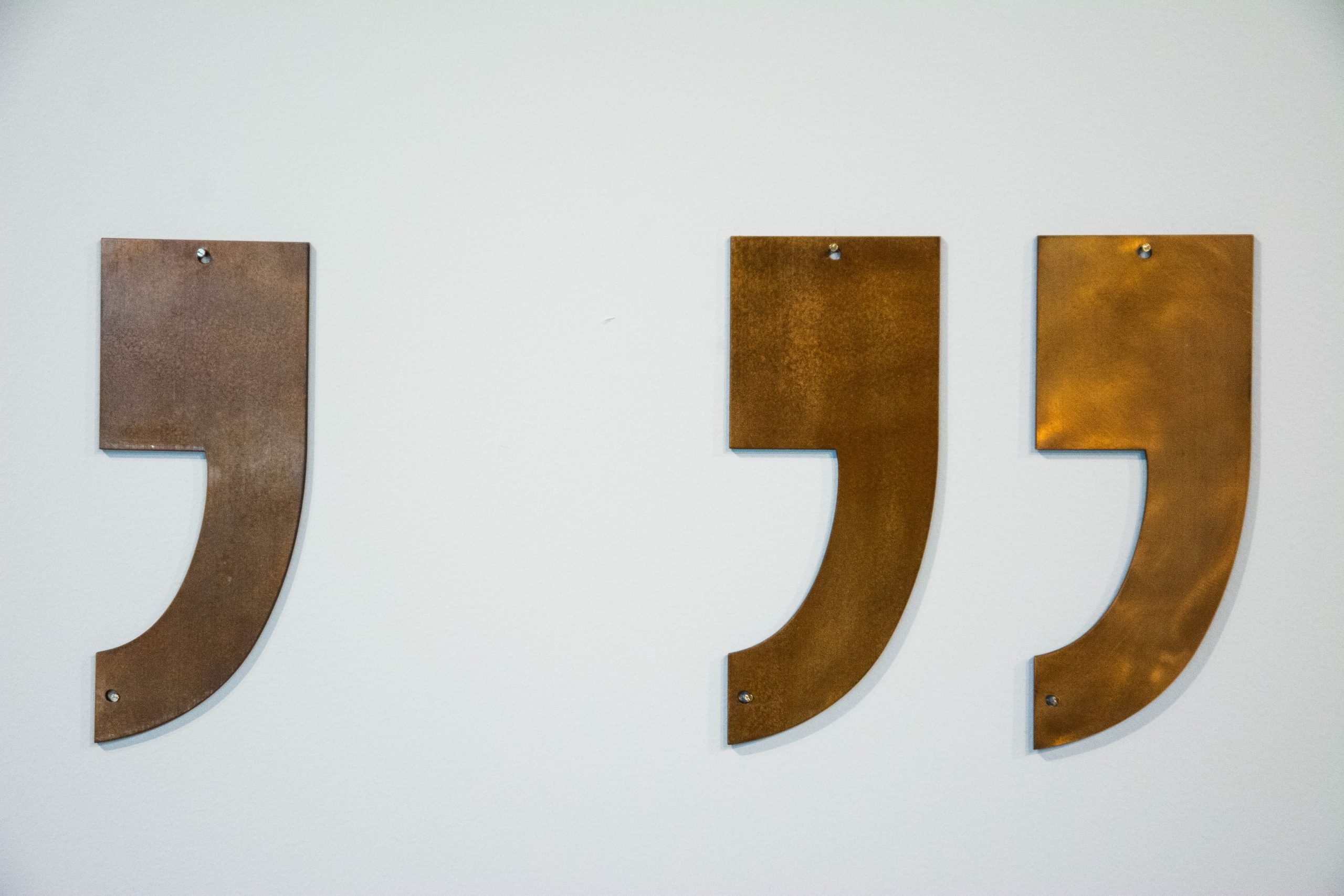
Installation, Flinders University Museum of Art. Photograph: Lana Adams.

In 2018 The Countess Report was invited to participate in the exhibition Borrowed Scenery at Campbelltown Art Centre (C-A-C).
In formulating our response to the exhibition we were interested in experimenting with a style of working that could operate as both artwork and advocacy. We wanted to explore the use of data and its relationship to Countess’ feminist politic from philosophical and conceptual perspectives, alongside our usual instrumentalization of data as a tool for benchmarking and transparency within the arts.
The work we produced comprised of three parts:
- ‘52 commas’, 2018, bronze
- A room sheet which provided perspectives data from the collection, and relevant policy documents related to the collection.
- Closing night presentation, written by The Countess Report, performed by artist Safari Lee. (see Countess @ C-A-C part II)

‘52 commas’ was informed by the importance of the comma as a delimiter in data analysis. The comma is an object that both separates fields of data and indicates a pause, or a moment of reflection between one idea/artwork/data field to the next. At C-A-C the number of commas corresponds to the number of artworks in the Borrowed Scenery exhibition. The work was installed between each artwork at the height of our knees, in lieu of didactic wall panels. The commas were as reliant on the artworks in the exhibition as the artworks were on ours.
In June 2019 we accepted C-A-C’s invitation to offer feedback and advice on an updated institutional collection policy that has been drafted in response to our findings on gender disparity.
52 Commas has been shown in various additional iterations including:
9 Commas as part of the exhibition Female Drivers (cur. Madeline Snow) at Maitland Regional Gallery in 2021;
and 11 commas in the exhibition Data Imaginary (cur. Angela Goddard) at Flinders University Museum of Art in 2022.
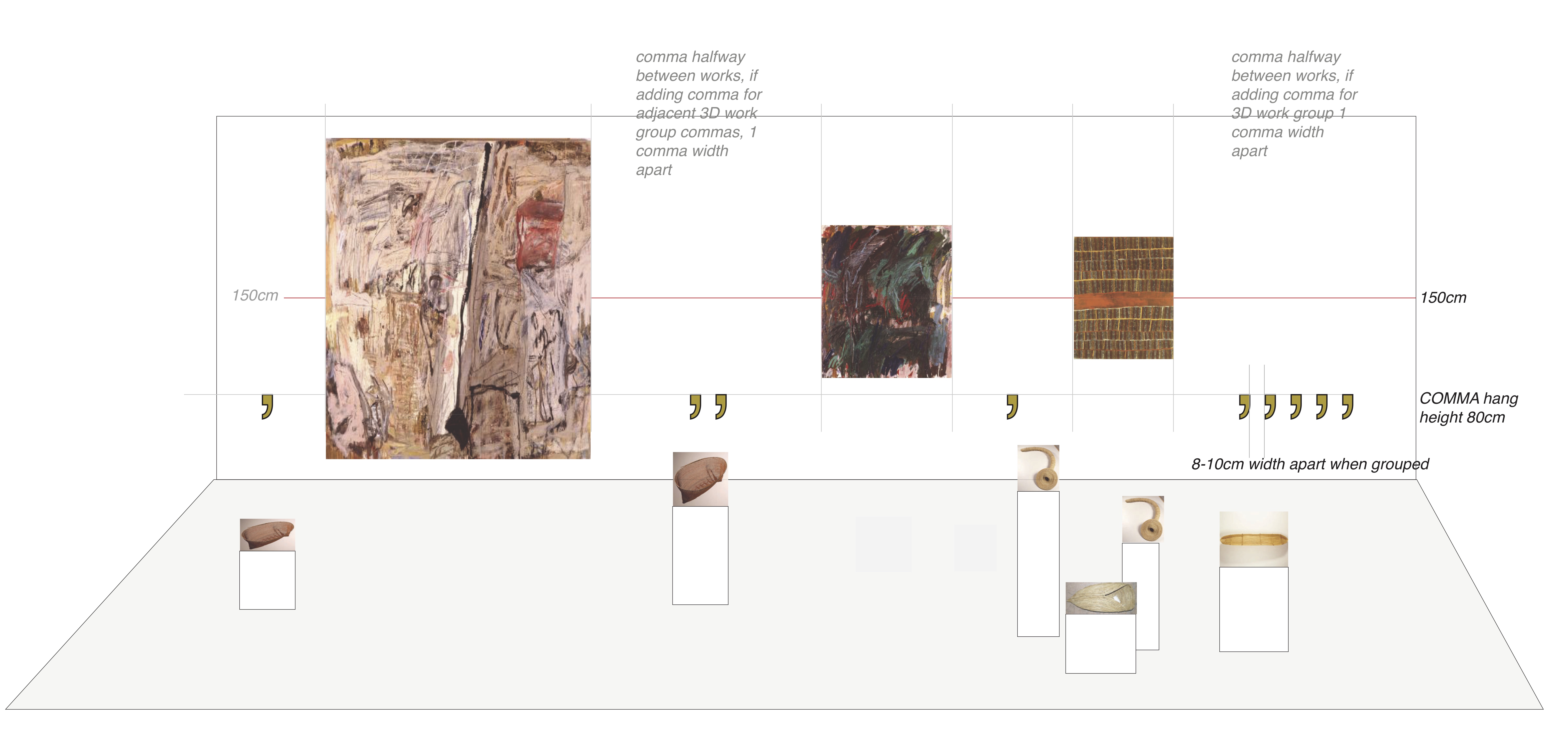
Installation mock up, 52 Commas
Read more:
http://rundog.art/borrowed-scenery-nevertheless-she-persisted/
https://artguide.com.au/borrowed-scenery-focuses-on-female-artists
https://visual.artshub.com.au/news-article/reviews/visual-arts/gina-fairley/review-borrowed-scenery-campbelltown-arts-centre-257225
https://www.backyardopera.com/art-culture-6/2018/12/22/borrowed-scenery-gender-framing-and-the-arts
https://www.art-almanac.com.au/borrowed-scenery/
http://f-magazine.online/borrowed-scenery/
The following is an extract of a talk written by Countess and performed by artist Safari Lee wearing head to toe leather at the exhibition closing event on 8 March 2018.
In true dominatrix style she cracked the whip as she read out our report on C-A-C’s collection, the flaws in its commissioning process and why we produced bronze sculpture as part of our contribution to the exhibition.
In true dominatrix style she cracked the whip as she read out our report on C-A-C’s collection, the flaws in its commissioning process and why we produced bronze sculpture as part of our contribution to the exhibition.

COUNTESS: ON CAMPBELLTOWN ARTS CENTRE
In November 2018, The Countess Report team spent a full day at Campbelltown Arts Centre ‘auditing’ their organisation. We were given full access to all data and exhibition reports for ach artwork in their collection.
We felt warmly welcomed into the organisation, but what was our role? To provide flashy data visualisation? To use our artist fee to ‘improve’, ‘diversify’, ‘restructure’ the organisation? Countess jostled to find a place within the Borrowed Scenery project.
If we weren’t making an artwork did that make us consultants? We wondered if it was appropriate that such an underfunded and overworked DIY organisation should take on this
role?
Can institutional critique be genuinely invited? What are the bureaucratic levers that can be weaponised, tweaked or used as material when analysing Campbelltown Arts Centre and is there value in using these in a creative or conceptual manner? Can we make the Director and the institution work hard to interpret our work in the same way we have had to work hard to interpret theirs?
COUNTESS: ON NUMBERS
Countess is in the business of numbers.
Numbers can get exhausting. It’s never really just the numbers we are interested in anyway, but what sits beneath them. What has informed them and what makes them so resilient and enduring?
Should 50/50 be the goal? We like the sentiment shared by Eva Cox when she quotes the logan from a 70’s badge: “Women who want equality with men lack ambition”.
We applied this logic to the collection of data itself. What gives it structure, form and integrity? In many computer languages commas are used as a field delimiter to separate arguments to a function, to separate elements in a list, and to perform data designation on
multiple variables at once. Basically, the comma allows for space and separation between numbers so that percentages and proportions can be calculated.
COUNTESS: ON VALUE
At Countess HQ we talk a lot about ‘value’ – who decides on it? How does it come about? How is it measured? Certified, professional valuers are engaged by institutions like Campbelltown Arts Centre as contractors, to officially ‘value’ artworks that the institution is interested in acquiring. These are artworks that have been recommended by CAC staff as potentially worthy to enter into the collection.
Perhaps it sounds obvious, that works entering a collection should be worthy, useful, desirable, beneficial, significant. But over the course of our research at Campbelltown Arts Centre we read though tens of these valuation statements and the more we read the more ambiguous, subjective, self-selecting and dodgy-as-shit these words began to seem.
COUNTESS: ON ACQUISITIONS
Without an ongoing collection budget, Campbelltown Arts Centre relies heavily on acquisitions via donations. Paintings, prints, drawings, sculptures, digital and new media work, weavings and ceramics. Have you heard of the federal government’s Cultural Gift Program? If you are an artist, we recommend you look this up.
How do you feel about making work to donate work? How do you feel about donating work as a tax benefit? How do you feel about being acquired? Do you have a preference on where in the storeroom your work is stored?
All donations must be checked against the Campbelltown City Council Collection management policy, which provides some guidelines for what constitutes a worthy acquisition. According to this document, which is accessible online, artworks considered for acquisition should be of “Highest artistic standard” and “meet the quality criteria”.
The quality criteria point that we gravitated towards was this one:
“Artworks, which by their size or characteristics, are considered to be permanent fixtures requiring considerable attachment to part of the structure of the building shall not be accepted for the permanent collection unless such artworks are considered to be of outstanding artistic merit and recognised as valuable to the development of Australian art”
This was part of our reason for casting our commas, so that by way of installation we could considerably attach to the structure of the building our artwork of outstanding artistic merit.
I’d like to reiterate a comment by an attendee of a the recent Seniors week program at Campbelltown Art Centre who suggested the institution permanently attach at least one
comma somewhere in the gallery.
COUNTESS: ON BEING CONSULTANTS
We had many conversations about what it meant to be consultants or artists. Could our “work” on data ‘improve’ the structure of an organisation?
Countess.Report is an artist run initiative. Independent always. Our evidence is often cited, but we are still DIY. We work online and in the real world. We are a public resource. And we are bad at self-promotion. Our artwork in Borrowed Scenery was a workaround to being framed as consultants.
Data will always be our core activity. But we are artists, and we want our labour and skills to be displayed, take up physical and cultural space and blur this whole consultancy question.
And after all this there is some talk of our work being acquired (read: donated) and if this happens we just ask that it is stored up high in the collection storeroom with a vantage point good enough to be able to look over the other works and make sure that Strategy 3.7 from the 10-year Asset Management Strategy is upheld: all assets are managed strategically,
transparently and efficiently.
Art galleries across Australia. We invite you to invite us to be part of your next project. Countess. Women count in the art world.
RESOURCES
Countess.Report Publications
GUIDELINES → FOR INSTITUTIONS, GALLERIES AND CURATORS WORKING WITH TRANS, NON-BINARY AND GENDER DIVERSE ARTISTS Compiled by artists Spence Messih & Archie Barry, copy-edited by Bobuq Sayed and proofread by EO Gill. This resource, in its first iteration, has been financially assisted by Countess and NAVA. ︎︎︎PDF
2019 Countess Report edited by Amy Prcevich ︎︎︎PDF
2016 Countess Report edited by Elvis Richardson ︎︎︎PDF
Reports on gender representation and related issues in the visual arts

